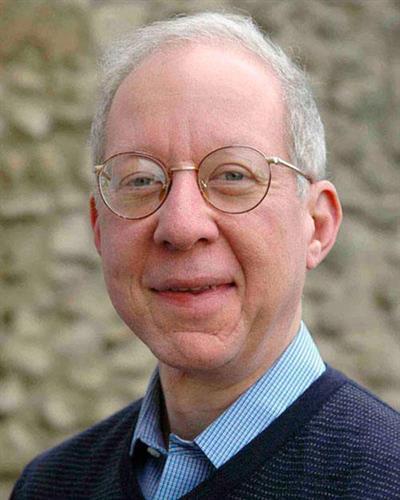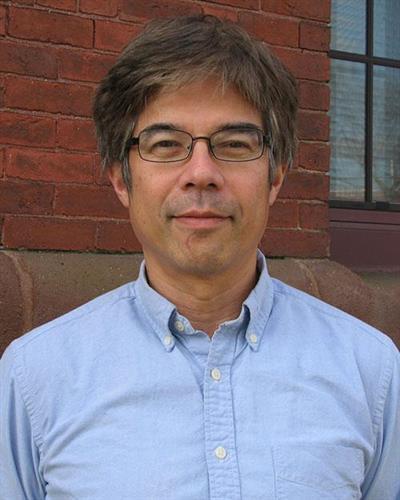Mathematics Department
https://math.tufts.edu/people/faculty/eric-quinto

Research/Areas of Interest
Tomography is an inverse problem, and the goal of tomography is to map the interior structure of objects using indirect data such as from X-rays. Integral geometry is the mathematics of averaging over curves and surfaces, and it is the pure math behind many problems in tomography. Integral geometry combines geometric intuition, harmonic analysis, and microlocal analysis (the analysis of singularities and what Fourier integral operators do to them). I have proven support theorems and properties of transforms integrating over hyperplanes, circles and spheres in Euclidean space and manifolds.
Because of the mentorship of Tufts physics professor and tomography pioneer, Allan Cormack (Tufts' only Nobel Laureate) I developed X-ray tomography algorithms for the nondestructive evaluation of large objects such as rocket bodies, and this motivated my research in limited data tomography
In limited data tomography problems, some tomographic data are missing. I developed a paradigm to describe which features of the object will be visible from limited tomographic data and which will be invisible (or difficult to reconstruct). I proved the paradigm using microlocal analysis. Often artifacts are added to tomographic reconstructions from limited data, and colleagues and I recently used microlocal analysis to prove the cause of these added artifacts and to predict where they will occur.
Collaborators and I have developed local algorithms for electron microscopy, emission tomography, Radar, Sonar, and ultrasound. In each case we use microlocal analysis to determine the strengths and weaknesses of the problem and to refine and improve the algorithms.
Kasso Okoudjou
https://math.tufts.edu/people/faculty/kasso-okoudjou

Research/Areas of Interest
Time-frequency analysis, pure, applied, and numerical harmonic analysis; analysis and differential equations on fractals and graphs. My research interests lie in pure, applied and numerical harmonic analysis, especially, wavelet analysis, frame theory, time-frequency analysis of pseudo-differential equations and its application to non-linear PDEs. I am also interested in (spectral) analysis on fractals and graphs and their applications to data sciences. I have growing interests in mathematics education, especially on issues related to active learning in lower level math courses and on broadening the participation of underrepresented minorities in undergraduate research in the mathematical sciences.
Education
- PhD, Mathematics, Georgia Institute of Technology, Atlanta, United States, 2003
- MS, Electrical Engineering, Georgia Institute of Technology, Atlanta, United States, 2003
- Maitrise es Sciences Mathematiques, National University of Benin, Abomey-Calavi, Benin,1996ore Program
Fulton Gonzalez
https://math.tufts.edu/people/faculty/fulton-gonzalez

Research/Areas of Interest
Noncommutative harmonic analysis, representations of Lie groups, integral geometry, and Radon transforms
Principally, I study two subjects in pure mathematics: harmonic analysis and integral geometry. The first field has a long history, dating back to Leonhard Euler's work on Fourier series back in the 1740's. The second is almost equally old, with roots in the geometric probability methods used to solve Buffon's needle problem in 1777.
In harmonic analysis, we learn how to decompose phenomena, expressed mainly by functions, into simpler constituents, as determined by the geometry of the space in which the phenomena occur. Thus, for instance, a human voice or the sound a violin makes can be decomposed into "pure" tones in order to be analyzed more effectively. Likewise, a fingerprint or any other two-dimensional picture can often be decomposed into simpler constituent functions.
One application of this kind of analysis is that it allows us to remove the "noise" associated with measured data. Another application, which forms the subject of my research, involves the reconstruction of functions from indirect data, such as their averages over curves or surfaces. This subject, integral geometry, is a large and active area in mathematics. The archetypal problem in this subject is as follows: how does one reconstruct a function in the plane from its averages over lines in the plane? The solutions to problems like these have many applications, for example in medical imaging and sonar.
I decided to pursue math as a profession when I was in college; when I went to graduate school I didn't really have any idea about what I should be interested in until I took a fantastic course taught by the professor who became my Ph.D. thesis adviser. It was an introductory course on integral geometry, and it was taught with the right combination of rigor and geometric intuition that was very appealing to me. It also helped that the class had some really bright and talented students, with whom I could discuss the mathematics being taught, and who have now become some of the world's top experts in integral geometry and related fields.
The thing that fascinates me about integral geometry is that one needs to know "a little bit of everything" in order to do research on the subject. In conjunction with this, one finds research problems in it which requires the collaboration of mathematicians whose expertise lies in disparate fields. Thus my main research collaborator, a Japanese mathematician from Tsukuba University named Tomoyuki Kakehi, is an expert in partial differential equations, which I know very little about. Likewise, Kakehi knows very little Lie group theory, a mathematical area I am familiar with.
Education
- PhD, Mathematics, Massachusetts Institute of Technology, United States, 1984
- BS, Mathematics, Ateneo University, Philippines, 1976